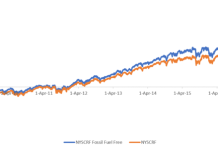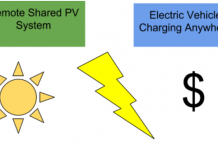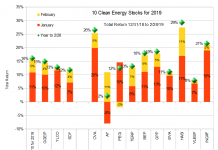Tom Konrad CFA
There are two types of solutions to the liquid fuels scarcity caused by stagnating (and eventually falling) oil supplies combined with growing demand in emerging economies. The most obvious is to find a substitute to replace oil. Supply constraints limit the full replacement of oil by most potential substitutes. Understanding those constraints leads us to the investment opportunities that arise from these substitutes.
Increasing demand and constrained supply of oil is fueling the search for oil substitutes to use in its place. Unfortunately, almost all of these potential substitutes also have limited supply. This article looks at the factors that limit the supply of (or demand for) potential substitutes. The next article, Part VIII will combine the insights about the barriers to adoption discussed in part VI and the constraints discussed here to highlight the investment opportunities which arise from these barriers and constraints.
Constraint 1: Conversion Efficiency / Alternatives
All alternative fuels require significant resources. Conventional biofuels require agricultural land, fertilizer, pesticides, water, enzymes, and heat in fermentation. Gas to liquids uses natural gas.
To understand if a particular alternative fuel will ever be economic, it helps to consider what else might be done with these inputs. If the alternative uses for these inputs have more economic value, then making fuel from them will never be an economic proposition.
With conventional biofuels, there is a trade off between one group of people driving, and another group eating (the food-vs.-fuel debate) and also the effects of land use change because of biofuels’ tendency to increase the area used for crop land. These trade offs are typically complex, and often difficult to calculate precisely, but in a few cases, the results are quite clear and enlightening.
Stranded Natural Gas is gas co-produced with oil far from transportation infrastructure. Such gas is essentially a waste stream which would be burned to prevent it from venting into the atmosphere, so if the gas could be economically transported to market, either as liquefied natural gas or a Gas to liquids (GTL) product that can be shipped out with the oil, there will be a net gain, no matter how much of the gas is lost in the conversion process. In contrast, pipeline natural gas has many alternative uses, and so its value as a transportation fuel must compete with power generation, domestic, and industrial uses. Further, the direct use of natural gas as a transportation fuel in vehicles is in direct competition with GTL technologies. Because much of the energy content is lost in the GTL process, it is unlikely that GTL will be viable for pipeline gas, even though it may make sense for stranded natural gas.
A useful tool for making these sorts of comparisons is Energy Return on Energy Invested (ERoEI), which is the ratio of the energy put into a process to the energy embodied in the products. ERoEI is useful in large part because there is a fairly extensive body of ERoEI analysis for various fuels. In general, if two processes use the same feedstock, the one with the higher ERoEI is likely to be the most economic. This comes with many caveats, however, since it does not take into account the different qualities of the fuels (can you really compare high-grade energy such as electricity to low grade energy such as heat?) Further, ERoEI does not take into account the timing of the energy flows. A process with an ERoEI of 1.1 may be better than a process with an ERoEI of 2, if the first process takes only a day and can be repeated every day, and the latter process takes a year. I looked at a way to account for the timing of energy flows with a measure I call EIRR here and here.
Many companies are considering ways to use Municipal Solids Waste (MSW) and industrial waste streams to make various alternative fuels. Purer waste streams with higher energy content have the most alternative uses, and the use with the highest economic value is likely to render most of the other uses uneconomic. For instance, waste paper can be recycled, burned to produce electricity, or converted into liquid fuels by a variety of enzymatic, chemical, and thermochemical processes. There is also economic value in reducing the amount of recycled paper at the source, by printing double-sided or moving to paperless processes. In the case of waste paper, I do not expect it to ever be converted into fuels on a large scale, because of the potential for recycling. If a ton of waste paper were turned into fuel, that would be a ton of paper which could not be recycled, leading to an additional ton of paper which would need to be made from virgin wood. This is economically similar to growing the wood for biofuel, and skipping the intermediary paper step.
Another use for MSW with high energy content is to convert it into electricity via incineration. It can also be used to make ethanol or other liquid fuels with a biomass to liquids process. Much can also be recycled or composted. Which one of these processes will be used for any particular waste stream will depend on the nature of the waste itself, as well as the local market for each fuel. It also depends on the value of carbon credits, since while producing electricity tends to be the most effective way to reduce carbon emissions, electricity is difficult to store or use as a transportation fuel.
One relatively easy comparison arises from Hydrogen. Hydrogen currently is made by either reforming natural gas or using electricity to electrolyze water. In both processes, some energy is lost, and the original natural gas or electricity are better fuels on several measures than the hydrogen itself. I don’t expect the hydrogen economy to progress beyond the demonstration stage unless we first find much more efficient ways of creating hydrogen and cheaper ways of storing it and using it in vehicles.
Constraint 2: Total Supply
The reason we’re concerned with peak oil investments is because the total supply of oil is finite. When total supply over time is finite, the amount pumped in any given year is also limited, and so must have a maximum, or peak. The timing of the peak is less important than the elasticity of supply. Elasticity of supply is a measure of how much the price of a commodity has to change in order to increase or decrease the amount supplied in response to changes in demand. If a small c
hange in demand requires a large change in price in order to bring supply into balance, then the supply of the commodity is inelastic. If a large change in demand requires only a small change in price to bring supply into balance, then the supply of the commodity is elastic. The elasticity of demand is the same, with regards to changes in price in response to changes in supply.
Sometime near the peak, oil supplies will become inelastic. Increasing demand will produce higher prices, but the higher prices will not be able to stimulate supply to match the increased demand. Instead, oil prices will stay high enough for reduced demand (demand destruction) to bring supply and demand back into balance.
Although we may not have reached “Peak Oil” in the sense of maximum annual production, I believe that the wild swings in the price of oil since 2007 demonstrate that we’ve reached peak oil in the sense of inelastic supply, as described in the preceding paragraph. Although worldwide oil production was slightly higher in 2008 than 2005, overall production was basically flat for the whole period since 2005, despite rapidly rising prices. The increased price volatility combined with tiny changes in market volume are strong signs of decreased elasticity or supply or demand. I see no reason for demand to have become significantly less elastic in recent years, so I assume the observed decreased elasticity is elasticity of supply.

Biofuels can be produced in relatively small quantities without much impact to the food supply and agricultural system. Yet as we scale them up to replace a significant fraction of our oil use, they impact farmland and require the conversion of natural ecosystems to farmland. Intensive biofuel production can also degrade existing farmland.
Only electricity has no real constraints on total supply, with wind and solar resources sufficient to supply all our energy needs hundreds of times over, so long as we build the wind and solar farms.
Constraint 3: Climate/Environment
How we account for environmental externalities will also have a large influence on which alternative fuels thrive and which ones become historical footnotes. Because of the fairly large supplies of relatively inaccessible coal, Coal-to-Liquids (CTL) technology compares favorably to all the other alternatives I’ve discussed until you consider the carbon emissions, disposal of the waste, and the impacts of coal mining that it entails. All fossil fuels, even coal, are finite, and so using alternative fossil fuels at best delays the impact of peak oil. Renewable options, in contrast, are steps towards a long-term solution.
Nevertheless, CTL stocks may turn out to be good investments despite the environmental harm. After all, environmental harm is an externality, and so long as the local government chooses not to make the CTL producer pay the real costs of production, high oil prices could make CTL plants very profitable. On the other hand, large unpriced externalities represent a significant risk to the companies creating them: new regulation may put a price on Greenhouse Gas emissions or take other regulatory steps which make the process unprofitable at the stroke of a pen.
Conclusion
Failing to take into account all constraints on a technology is a simple and common mistake. Unfortunately, this common mistake leads investors to overly optimistic conclusions, often followed by overly optimistic investments. Since overly optimistic investments are one of the surest ways to lose money, investors will be wise to keep these constraints on potential oil substitutes in mind when considering investments.
One reader of part VI made just this mistake. He made the case that the supply of conventional gas (Constraint 2: Total Supply) might not limit the use of natural gas vehicles because of the potential for biomethane from cattle. What he failed to consider is that while biomethane can be used as a fuel for natural gas vehicles, it can also be used for anything else that natural gas is currently used for (Constraint 1:Alternatives.) Because Biomethane and natural gas are essentially interchangeable, it is more informative to consider the potential contribution of Biomethane to total natural gas supply than to calculate how many vehicles could potentially be fueled by biomethane. I was not able to find a national resource assessment for biomethane, but I did find an assessment for California. In California, the technically feasible biomethane resource (including biomethane from livestock) was less than 1% of California’s natural gas usage. Hence, fluctuations in natural gas supply are likely to swamp any increases in biomethane production.
If we want to understand the amount of natural gas available for natural gas vehicles, we need only consider the supply of fossil natural gas. Biomethane is only a rounding error in the overall calculation. Hence, while biomethane may make some investors rich by growing rapidly from a small base, it will have a negligible difference to the success of natural gas vehicles. If you believe biomethane will take off, the best way to invest based on that belief would be to invest in dairy farms, not in natural gas vehicles.
In part VIII, I’ll bring together these ideas about constraints with my thoughts about barriers from part VI, and highlight the investments that should benefit from both.
Previous articles in this series are available here:
- Biofuels
- Hydrogen and Vehicle Electrification
- Natural Gas Vehicles
- GTL and CTL
- Algae
- Barriers to Substitution
DISCLOSURE: None.
DISCLAIMER: The information and trades provided here are for informational purposes only and are not a solicitation to buy or sell any of these securities. Investing involves substantial risk and you should evaluate your own risk levels before you make any investment. Past results are not an indication of future performance. Please take the time to read the full disclaimer here









Good point on the supply growing ever more inelastic, this definitely helps me to understand the research involved in making a good long term energy investment decision.
This series has had many good points, however, the examination of bio-fuels reminded me of an interesting article about energy payback throughout the history of civilization, with the conclusion that for the last 20 years or so, society has been pushed away from higher energy payback ratios. This reversal is opposite to what has happened through the rest of history and adds one more complication to the energy puzzle. Here is a link to it.
http://www.sciencedirect.com/science?_ob=ArticleURL&_udi=B6V2W-4SV6PKN-5&_user=10&_coverDate=09%2F30%2F2008&_rdoc=1&_fmt=high&_orig=search&_sort=d&_docanchor=&view=c&_searchStrId=1299217352&_rerunOrigin=scholar.google&_acct=C000050221&_version=1&_urlVersion=0&_userid=10&md5=be6f51c9ba45193a25c1d514fa6fc385
I agree, Greg… I think the issue of how much energy it takes to produce energy is one of the core issues, and the main reason why I find most alternative fuels somewhat wanting (see part VIII.)
In part 9 (to be published this weekend) I’ll talk about what I think the implications of not having any drop in substitute for oil will be… I don’t talk about the energy return explicitly, but it can be seen as the source of the problem.
Great Article!!